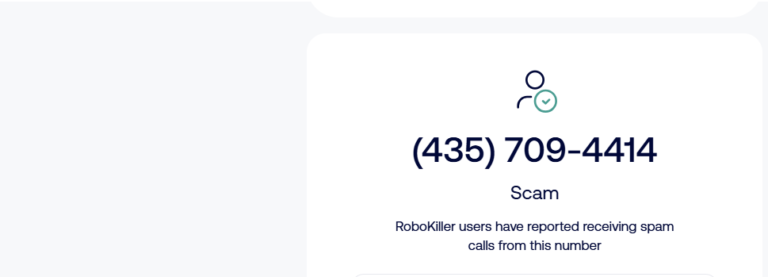Understanding and Resolving “[error] 127.0.0.1:6256 ssl handshake failed with”
In the world of web development and server management, encountering errors is a common occurrence. One such error that can be particularly troublesome is the “[error] 127.0.0.1:6256 ssl handshake failed with” message. This article aims to demystify this error, explain its causes, and provide comprehensive solutions to resolve it.
What Does “[error] 127.0.0.1:6256 ssl handshake failed with” Mean?
The “[error] 127.0.0.1:6256 ssl handshake failed with” error is a specific type of SSL (Secure Sockets Layer) error that occurs during the handshake process between a client and a server. To understand this error fully, let’s break down its components:
- [error]: Indicates that this is an error message.
- 127.0.0.1: This is the localhost IP address, meaning the error is occurring on the local machine.
- 6256: This is the port number where the SSL handshake is failing.
- ssl handshake failed: This phrase describes the nature of the error – the SSL handshake process has failed to complete successfully.
The SSL Handshake Process
Before diving deeper into the “[error] 127.0.0.1:6256 ssl handshake failed with” issue, it’s crucial to understand the SSL handshake process:
- Client Hello: The client sends a “hello” message to the server, including the SSL version it supports and a list of cipher suites.
- Server Hello: The server responds with its SSL version and chosen cipher suite.
- Certificate Exchange: The server sends its SSL certificate to the client.
- Key Exchange: The client and server exchange key information to establish a secure connection.
- Finished: Both parties send a “finished” message, encrypted with the newly established keys.
When you encounter the “[error] 127.0.0.1:6256 ssl handshake failed with” message, it means that this process has been interrupted at some point.
Common Causes of “[error] 127.0.0.1:6256 ssl handshake failed with”
Several factors can lead to the “[error] 127.0.0.1:6256 ssl handshake failed with” error:
- Mismatched SSL Protocols: If the client and server are using incompatible SSL/TLS versions, the handshake will fail.
- Invalid or Expired SSL Certificate: An outdated or improperly configured SSL certificate can cause this error.
- Incorrect Server Configuration: Misconfigured server settings, particularly in web servers like Apache or Nginx, can lead to SSL handshake failures.
- Firewall or Antivirus Interference: Sometimes, overzealous security software can interfere with the SSL handshake process.
- Cipher Suite Incompatibility: If the client and server cannot agree on a common cipher suite, the handshake will fail.
- Network Issues: Connectivity problems or network interruptions can disrupt the SSL handshake.
- Clock Synchronization Problems: SSL certificates rely on accurate time settings. If the client or server’s clock is significantly off, it can cause handshake failures.
Diagnosing the “[error] 127.0.0.1:6256 ssl handshake failed with” Error
To effectively resolve the “[error] 127.0.0.1:6256 ssl handshake failed with” issue, it’s essential to diagnose the root cause. Here are some steps to help identify the problem:
- Check SSL Certificate: Verify that your SSL certificate is valid, not expired, and properly installed.
- Review Server Logs: Examine your server logs for more detailed error messages that might provide clues about the cause of the handshake failure.
- Use SSL Debugging Tools: Employ tools like OpenSSL’s s_client command to test the SSL connection and identify any issues.
- Analyze Network Traffic: Use packet capture tools like Wireshark to examine the SSL handshake process in detail.
- Verify Client-Server Compatibility: Ensure that both the client and server support compatible SSL/TLS versions and cipher suites.
Solutions to Resolve “[error] 127.0.0.1:6256 ssl handshake failed with”
Once you’ve identified the cause of the “[error] 127.0.0.1:6256 ssl handshake failed with” error, you can proceed with the appropriate solution:
1. Update SSL/TLS Configuration
If the error is due to mismatched SSL protocols, update your server configuration to support modern SSL/TLS versions:
apacheCopySSLProtocol all -SSLv3 -TLSv1 -TLSv1.1
SSLCipherSuite HIGH:!aNULL:!MD5:!3DES
2. Renew or Replace SSL Certificate
If your SSL certificate is expired or invalid:
- Obtain a new SSL certificate from a trusted Certificate Authority (CA).
- Install the new certificate on your server.
- Ensure all intermediate certificates are properly installed.
3. Correct Server Configuration
Review and correct your web server configuration:
- For Apache: apacheCopy
<VirtualHost *:443> SSLEngine on SSLCertificateFile /path/to/your/certificate.crt SSLCertificateKeyFile /path/to/your/private.key SSLCertificateChainFile /path/to/your/chain.crt </VirtualHost> - For Nginx: nginxCopy
server { listen 443 ssl; ssl_certificate /path/to/your/certificate.crt; ssl_certificate_key /path/to/your/private.key; ssl_trusted_certificate /path/to/your/chain.crt; }
4. Adjust Firewall and Antivirus Settings
If security software is causing the issue:
- Temporarily disable your firewall or antivirus to test if it’s the cause.
- If confirmed, add exceptions for your web server or SSL traffic.
5. Update Cipher Suites
Ensure your server supports modern cipher suites:
apacheCopySSLCipherSuite EECDH+AESGCM:EDH+AESGCM:AES256+EECDH:AES256+EDH
6. Resolve Network Issues
To address network-related problems:
- Check your network connectivity.
- Ensure all required ports (usually 443 for HTTPS) are open.
- Verify DNS settings are correct.
7. Synchronize System Clocks
To fix time-related issues:
- Use NTP (Network Time Protocol) to synchronize your server’s clock.
- On Linux systems: bashCopy
sudo ntpdate pool.ntp.org
Preventing Future “[error] 127.0.0.1:6256 ssl handshake failed with” Occurrences
To minimize the risk of encountering the “[error] 127.0.0.1:6256 ssl handshake failed with” error in the future, consider implementing these best practices:
- Regular SSL Certificate Maintenance: Set up reminders for SSL certificate renewals and keep track of expiration dates.
- Automated Certificate Management: Use tools like Certbot for automatic certificate renewal and installation.
- Continuous Monitoring: Implement monitoring solutions to alert you of SSL-related issues before they cause downtime.
- Keep Software Updated: Regularly update your web server software, SSL libraries, and operating system to ensure you have the latest security patches and features.
- Perform Regular SSL/TLS Audits: Conduct periodic audits of your SSL/TLS configuration to ensure it meets current best practices and security standards.
- Use Strong Cipher Suites: Regularly review and update your supported cipher suites to maintain a balance between security and compatibility.
- Implement Perfect Forward Secrecy (PFS): PFS ensures that session keys are not compromised even if the server’s private key is compromised.
Advanced Troubleshooting for “[error] 127.0.0.1:6256 ssl handshake failed with”
For more complex cases of the “[error] 127.0.0.1:6256 ssl handshake failed with” error, consider these advanced troubleshooting techniques:
1. SSL/TLS Protocol Analysis
Use OpenSSL to perform a detailed analysis of the SSL/TLS handshake:
bashCopyopenssl s_client -connect localhost:6256 -tls1_2
This command attempts to establish a TLS 1.2 connection and provides verbose output about the handshake process.
2. Wireshark Packet Analysis
Capture and analyze network traffic using Wireshark:
- Start a Wireshark capture on the loopback interface.
- Apply the filter:
tcp.port == 6256 && ssl - Attempt to reproduce the error.
- Analyze the captured packets to identify where the handshake is failing.
3. Server-Side Debugging
Enable verbose SSL logging on your web server:
- For Apache: apacheCopy
LogLevel debug ssl:trace4 - For Nginx: nginxCopy
error_log /var/log/nginx/error.log debug;
4. Client-Side SSL Debugging
If the issue is client-related, use browser developer tools:
- Open the browser’s developer console (F12 in most browsers).
- Navigate to the Security or Network tab.
- Attempt to access the problematic URL.
- Analyze the SSL/TLS handshake details provided in the console.
Impact of “[error] 127.0.0.1:6256 ssl handshake failed with” on SEO and User Experience
The “[error] 127.0.0.1:6256 ssl handshake failed with” error can have significant implications for both SEO and user experience:
SEO Impact:
- Lower Search Rankings: Search engines prioritize secure websites. SSL errors can negatively impact your site’s ranking.
- Reduced Crawlability: If search engine bots encounter SSL errors, they may have difficulty crawling your site, leading to incomplete indexing.
- Security Warnings: Browsers may display security warnings, deterring users and potentially affecting your site’s reputation in search results.
User Experience Impact:
- Increased Bounce Rates: Users encountering SSL errors are likely to leave your site immediately, increasing bounce rates.
- Loss of Trust: SSL errors can make users question the security and legitimacy of your website.
- Reduced Conversions: For e-commerce sites, SSL errors can significantly impact sales and conversions.
Conclusion
The “[error] 127.0.0.1:6256 ssl handshake failed with” error, while frustrating, is a solvable issue. By understanding its causes, following the diagnostic steps, and implementing the appropriate solutions, you can resolve this error and prevent its recurrence. Remember that maintaining a secure SSL/TLS configuration is crucial not only for avoiding errors but also for ensuring the security of your users’ data, improving your site’s SEO performance, and providing a trustworthy user experience.
Regular maintenance, continuous monitoring, and staying updated with the latest SSL/TLS best practices will help you keep your website secure and error-free. If you continue to experience persistent issues with the “[error] 127.0.0.1:6256 ssl handshake failed with” error, don’t hesitate to seek assistance from professional system administrators or your hosting provider.

![[error] 127.0.0.1:6256 ssl handshake failed with](https://10for10.uk/wp-content/uploads/2024/09/1542090472892.png)





